Hearing Aids
The Munk Difference
What are the styles of hearing aids?
With so many options available, it can be overwhelming to determine which style of hearing aid is right for you. Your audiologist in Toronto will walk you through the different styles of hearing aids and their unique features, helping you make an informed decision on which type is most suitable for your needs and preferences. From behind-the-ear to in-the-canal designs, discover the different hearing aid styles we offer at Munk Hearing Centre.
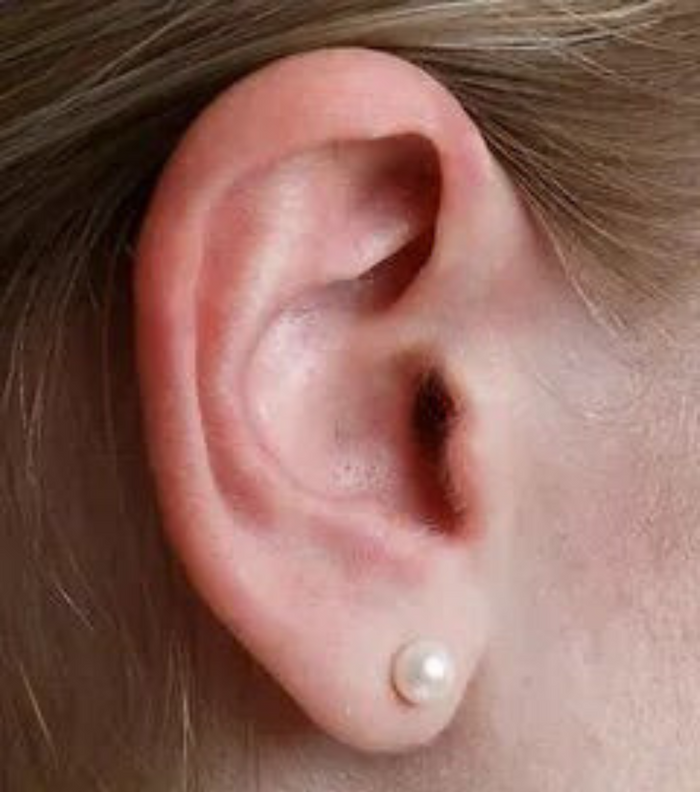
Invisible In The Canal (IIC)
Smallest and most discreet hearing aid that fits completely inside the ear canal. Generally appropriate for mild to moderate hearing loss.
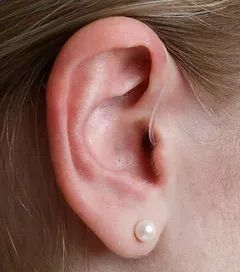
Receiver In The Canal (RIC)
Small discreet hearing aid that sits behind the ear and is connected via an earwire to a small dome that sits deep in the ear canal. Generally appropriate for high-frequency hearing loss or mild to moderate hearing losses.
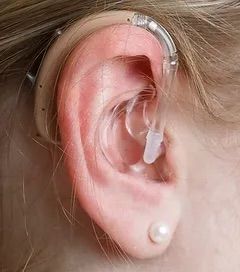
Behind The Ear (BTE)
Large hearing aid that sits behind the ear and sends sound to a custom-made earmold in the ear via an earhook and tube. Generally appropriate for mild to profound hearing losses.
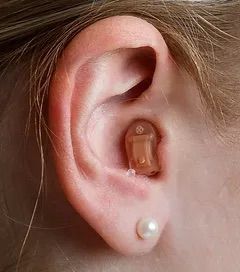
Completely In the Canal (CIC)
Small discreet hearing aid that is custom made to fit deep in the ear canal. Generally appropriate for mild to moderate hearing losses.
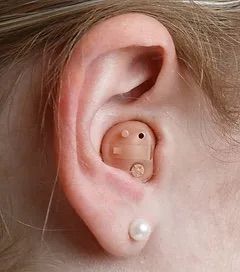
In The Canal (ITC)
Small custom-made hearing aid that sits at the edge of the ear canal. Generally appropriate for mild to moderately severe hearing losses.
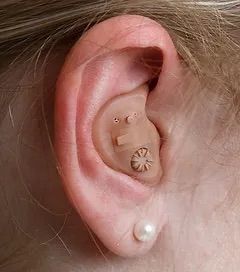
In The Ear (ITE)
Custom-made hearing aid that fills the concha of the ear, either half shell or full shell. Generally appropriate for mild to severe hearing losses.
What style is right for me?
The choice of a hearing aid style is not just a cosmetic one. The style that you choose can impact your overall experience with the device, including factors like sound quality, maintenance, insertion, connectivity to external devices, and battery life. Your audiologist in Toronto will help you to select a style by explaining which hearing aids would be appropriate for your degree of hearing loss and then explaining the benefits and potential downsides of the remaining options.
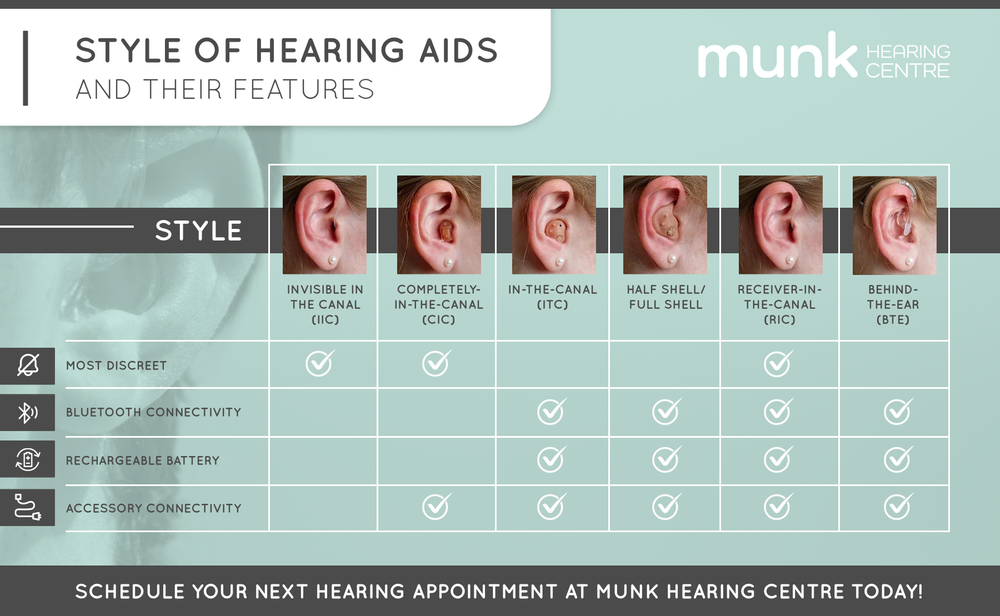
What are the differences between the technology levels available?
We are pleased to offer a comprehensive range of hearing aids in four technology levels: essential, basic, advanced, and premium. It's important to understand the different features available with each technology level, including sound quality in different noise scenarios, wind reduction, and rechargeable battery options. Our knowledgeable team at our Toronto General Hospital and Uptown locations is here to assist you in making an informed decision and finding the perfect hearing aid that will provide optimal sound quality and cater to your unique preferences.

WHAT BRANDS ARE AVAILABLE?
We carry a wide selection of hearing aids from the top manufacturers in the industry, including Phonak, ReSound, Oticon, Starkey, Widex, Signia, and Unitron. Our experienced team of professionals can help you find the perfect hearing aid to suit your individual needs and budget.

Interested in learning more?
For more information about products and pricing, please call Munk Hearing Centre at 416-340-5530. You may also fill out our contact form below.
